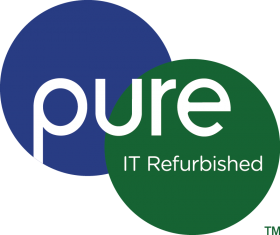With Windows 10 support ending on October 14, 2025, it’s time to assess your options. Whether you’re considering upgrading to Windows 11, extending the life of existing hardware, or exploring alternative solutions, this article will help guide you through the available choices.
The Problem:
Windows 11, unlike any version of Windows prior is only supported to run on a certain generation of CPU or newer. This is an Intel 8th Gen CPU (or 8th Gen equivalent AMD) along with a TPM 2.0 chip. Older devices won’t be supported to run Windows 11 but can you actual run Windows 11 on these older devices?
Our selection of Windows 11 supported laptops.
The short answer is yes, but it comes with significant risks, particularly for organisations with Cyber Essentials accreditation or those with cybersecurity insurance. Running an unsupported operating system, in this case Windows 11 on non supported hardware, not only exposes you to potential security threats but may also invalidate both certifications and insurance coverage.
Your Options Before October 2025
1. Upgrade Your Hardware
The most straightforward solution is to invest in newer devices that support Windows 11. If budgets are tight, an 8th Gen or newer version of Intel’s i3 CPU offers Windows 11 support at a lower cost than i5 or i7 devices while still meeting the minimum system requirements.
2. Run Unsupported Windows 10 or 11
While some may consider running unsupported versions of Windows temporarily, it’s not recommended due to security risks and insurance implications. However, there is better alternatives listed below which could help bridge that gap.
3. Windows 10 Extended Security Updates (ESU)
For organisations needing more time to transition, Windows 10 ESU provides security updates for up to three additional years after end-of-support:
Cost: Approximately £7 over 3 years for educational institutions and £330 for commercial organisations.
Pros:
- Minimal disruption: No need to create new images or redeploy devices, making it a simple licensing exercise.
- Extends the use of Windows 10, allowing more time for software compatibility and planning the Windows 11 upgrade.
Cons:
- You won’t be able to roll out Windows 11 and any advantages this offers over Windows 10.
- Eventually, you’ll still need to replace older hardware, which adds to the overall cost with the ESU licenses.
4. Windows 10 Long-Term Servicing Channel (LTSC)
Pros:
- You can continue using Windows 10 with security updates until 2027.
- LTSC is arguably a more stable operating system with less updates, perfect for environments where consistency is key.
Cons:
- Lacks many features such as the Microsoft Store, Cortana, and several apps like Mail, Calendar, and OneNote.
- It may require additional work to create an image that includes all the functionality your users need.
- More potential for teething issues when transitioning to the more limited feature set of LTSC.
- Only available to organisations with a Volume Licensing Agreement, which can limit access for smaller businesses or those without such agreements
If you’d like to learn more about LTSC, there is a great discussion on the ANME forum for any IT professionals.
5. ChromeOS Flex
A non-Microsoft alternative, ChromeOS Flex allows you to repurpose older hardware. Although it’s more niche, it can extend the life of devices without the need to buy new ones.
Pros:
- Free to install and can be run on any supported devices, including many older devices not supported by Windows 11.
- Lightweight, so it performs well even on lower-spec hardware
Pros:
- Lacks many standard Windows applications and functionality.
- Many business and office apps aren’t designed to run on ChromeOS.
- Changes to Google’s support structure could alter device compatibility or licensing fees in the future.
Conclusion
While upgrading to Windows 11 compatible hardware is the ideal solution, we understand many organisations may not have the budgets to replace all necessary hardware by October 2025. Fortunately, options like Windows 10 ESU and LTSC buy you time to make the transition while keeping your systems secure and ChromeOS Flex could be a long term switch for organisations.
Weigh up the pros and cons of each option based on your organisation’s specific needs, future plans, and budget. Our recommendations would be to switch out your hardware to Windows 11 supported devices where budgets permit, even if that means going down the route of an is processor. For education and wider public sector organisations, Windows 10 ESU offers an extremely cost effective way to extend the use of Windows 10 with little hassle and while keeping you secure and compliant.
If you’re unsure which route to take, feel free to reach out—we’re happy to guide you through the transition!







